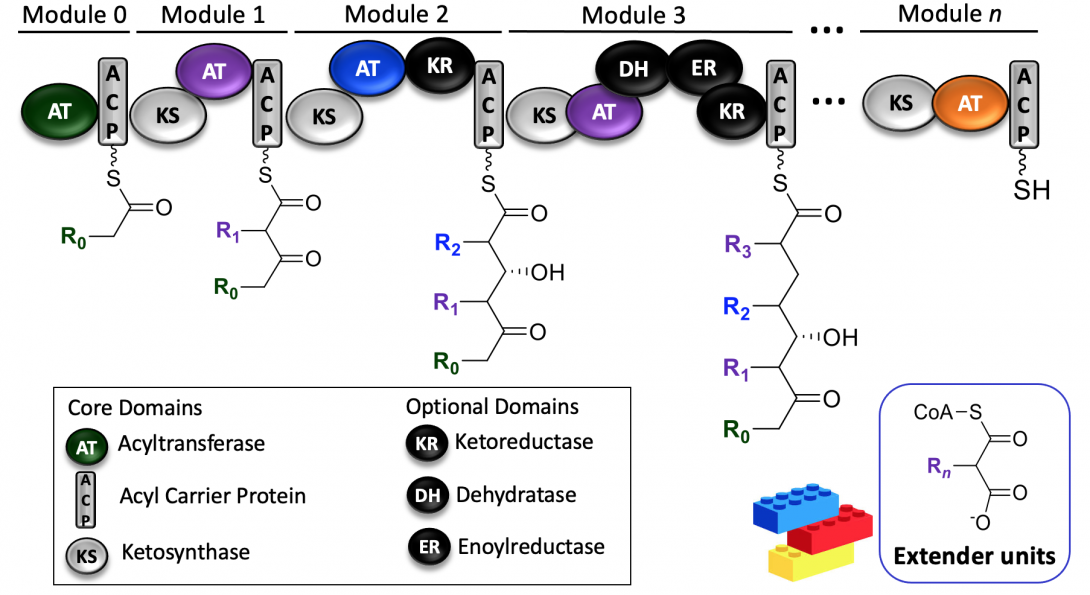Polyketide Biosynthesis and Engineering

Harnessing Biosynthetic Pathways for Natural Product Production
Polyketides are one of the largest classes of known bacterial natural products. Examples of bacterial polyketides that found applications in biomedicine include antibiotic erythromycin, immunosuppressant FK506, and anticancer epothilone. Classical, bacterial polyketide synthases (PKSs) are giant, multi-modular molecular machines that have been referred to as “molecular lego”. Individual catalytic units or domains are organized into modules, with each module being responsible for incorporation and processing of a particular building block in an assembly-line fashion. Structural diversity comes from the combinatorial use of: i) the type and number of building blocks (activated carboxylic acid monomers); ii) the presence or absence of optional catalytic activities; and iii) the action of post-PKS, tailoring enzymes. Modular PKSs are remarkable templates for the production of polyketides, so that one can “read” the PKS domain architecture and deduce the structure of the natural product (to a certain extent) and vice-versa. Another modularity aspect of bacterial natural product biosynthesis is that biosynthetic genes are often clustered in a single locus in the chromosome and genes are frequently organized in regulatory units or operons, facilitating identification of the full set of genes for the biosynthesis of a particular natural product and aiding transfer to other systems. The modularity of polyketide biosynthesis offers tremendous opportunities for engineering further structural diversity and generating chemical novelty (1). In addition, polyketides are notoriously difficult to obtain synthetically, another argument for producing them by microbial fermentation.
References Heading link
- Kornfuehrer K, Eustáquio AS.* (2019) Diversification of polyketide structures via synthase engineering. MedChemComm 10: 1256-1272.